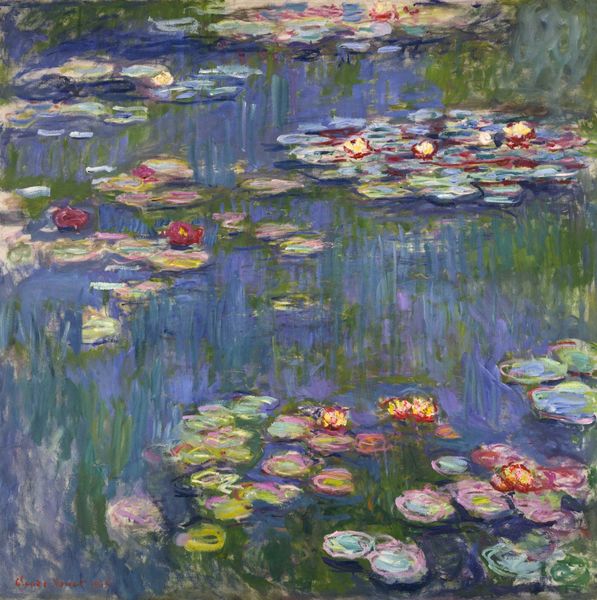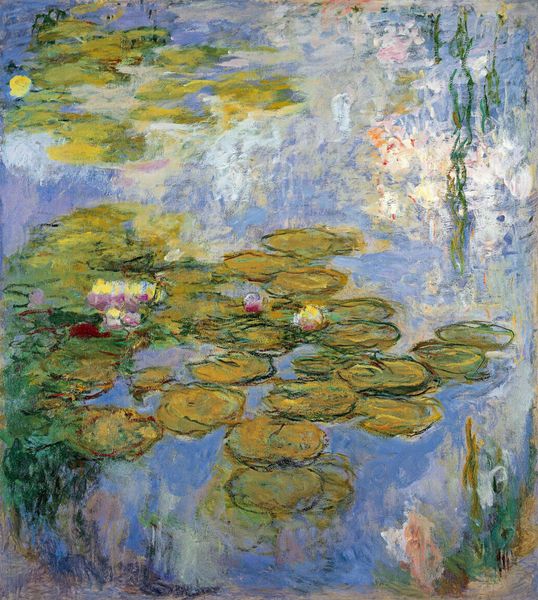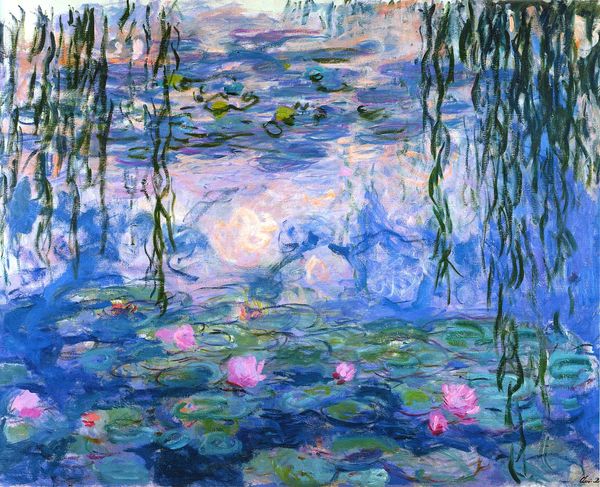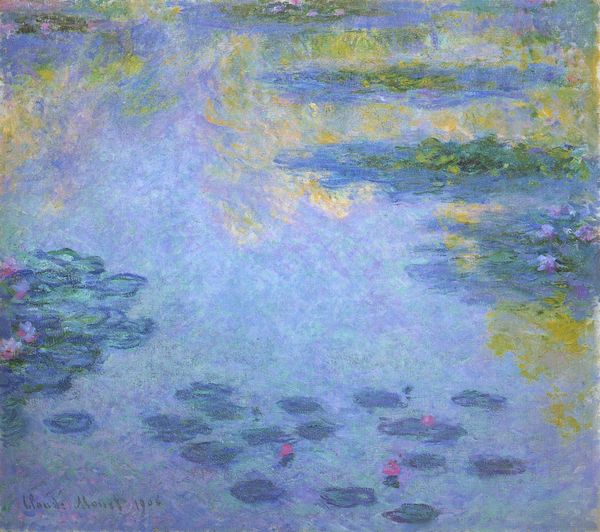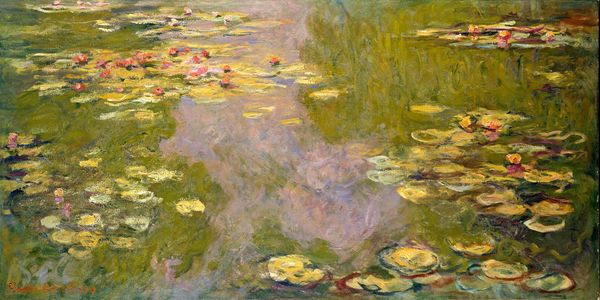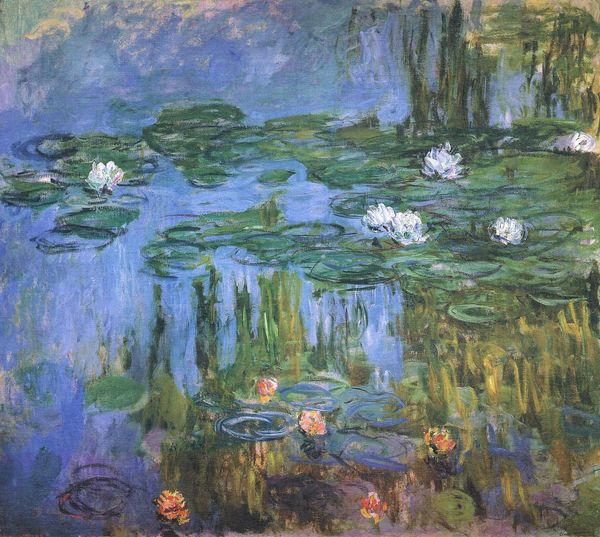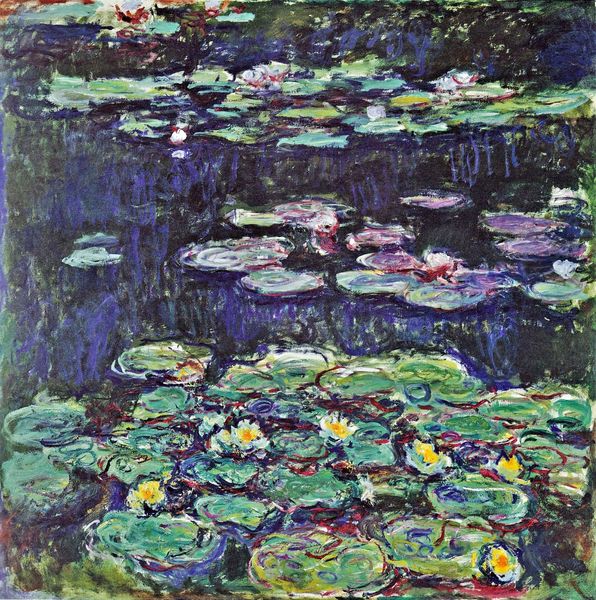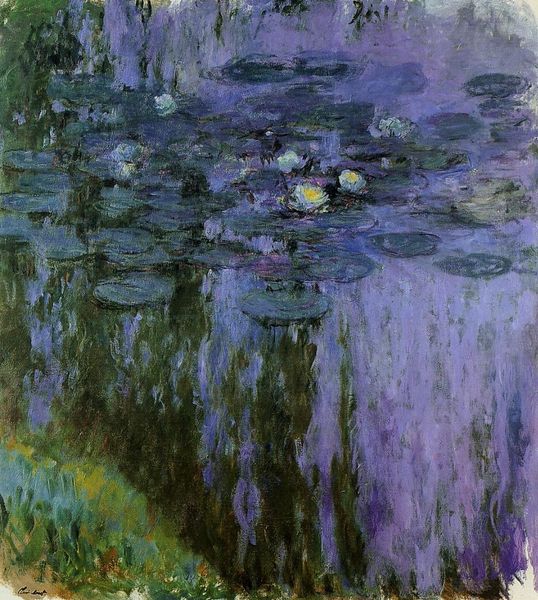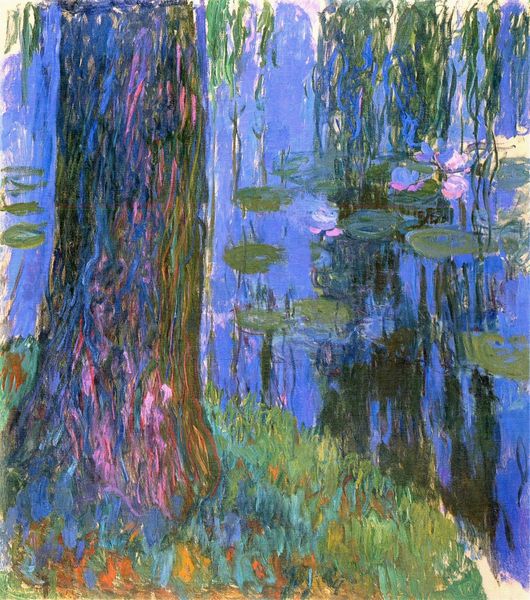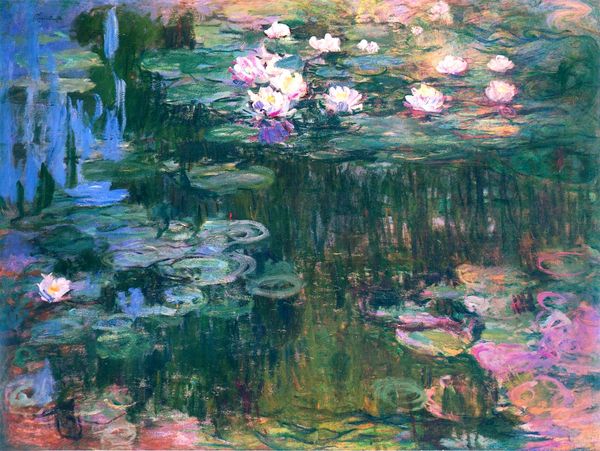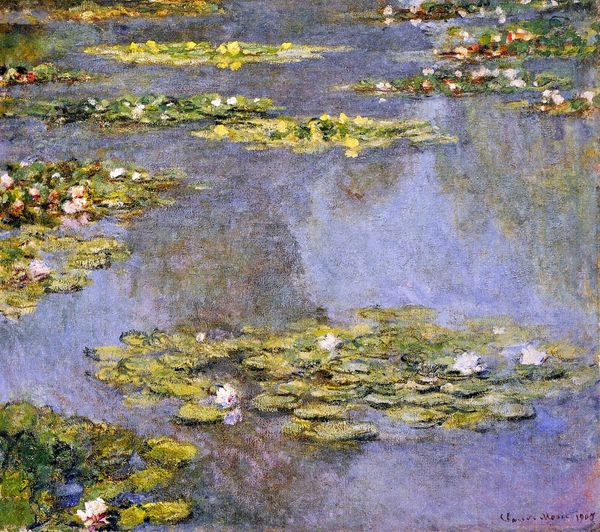
Copyright: Public domain
Curator: A violet dreamscape! Monet's "Water Lilies," painted around 1919, offers a vision of tranquility, almost melancholic in its quiet beauty. Editor: It feels immediately immersive, a world built from layers of brushstrokes. The heavy blues and purples create a sort of sensory overload that challenges perception, doesn’t it? Curator: Absolutely, but consider the socio-economic context of its production. Monet, at this stage, was celebrated and commercially successful, allowing him the freedom to concentrate solely on the formal problem of capturing light on water in his personal Giverny garden, far from urban life. Editor: True, but this withdrawal shouldn't diminish our appreciation for the painting's pure form. The composition itself guides our eye; the floating pads act as stepping stones, while the willow branches hanging down almost conceal what lies beneath the surface, playing with depth and perception. Curator: And the lily pads themselves! They weren't just plucked from nature but cultivated. Monet redesigned his water garden and employed gardeners. His process embodies artistic intervention within broader production systems shaping both the landscape and, ultimately, this artwork. Editor: But look closely—each dab of paint feels deliberate. He builds texture, capturing ephemeral light reflecting on the water's surface and the flowers themselves. His manipulation of color is a dialogue with nature. Curator: Yes, and it’s also about industrialized pigment production that shaped impressionist painting techniques! Before these advances, such consistent hues weren't available, allowing him these chromatic effects that became associated with industrial color proliferation during his time. Editor: Regardless, the result speaks for itself: an invitation to contemplation. There’s something quite serene and perhaps meditative about letting your gaze wander across its surface, observing these intricate patterns within the whole. Curator: For me, it's less serene than indicative of art patronage and industrial networks! I recognize its formal beauty but must contextualize what kind of labor allowed this art, where pigments came from, and for whom these gardens became escapist retreats from early 20th-century conflicts. Editor: An interesting final reflection, which nicely complicates an initially pleasurable sensation evoked by Monet's technique. Curator: Exactly! So, as you walk on, perhaps ponder both beauty and what conditions made its appearance possible.
Comments
No comments
Be the first to comment and join the conversation on the ultimate creative platform.
